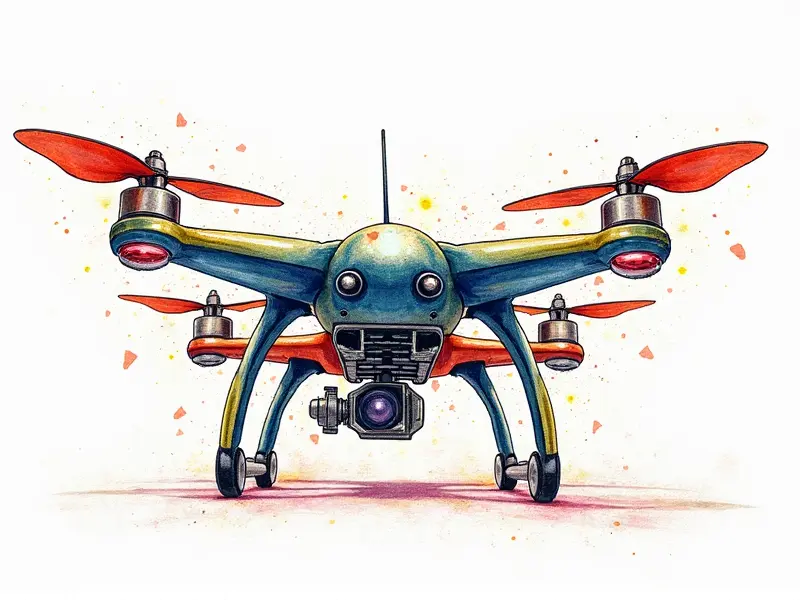Lightweight drone design tips

Top Tips for Designing Lightweight Drones
Designing lightweight drones is a critical aspect of creating efficient, high-performance unmanned aerial vehicles (UAVs). Whether you're building a quadcopter, helicopter, or fixed-wing aircraft, reducing weight can significantly enhance flight time and maneuverability. This article will provide you with essential tips to optimize your drone design for maximum efficiency.
Essential Guide to Lightweight Drone Design
The process of designing lightweight drones involves several key considerations:
- Material Selection: Choose materials that offer the best strength-to-weight ratio, such as carbon fiber or aluminum composites.
- Aerodynamics: Optimize your design for reduced drag and improved lift to maximize flight efficiency.
- Battery Technology: Utilize high-capacity, lightweight batteries to extend flight time without adding unnecessary weight.
Craft Your Perfect Lightweight Quadcopter
A quadcopter is a popular choice for many drone enthusiasts due to its stability and maneuverability. Here are some tips to create the perfect lightweight quadcopter:
- Frame Design: Use a modular frame design that allows easy replacement of components.
- Motors and Propellers: Opt for high-efficiency motors and propellers designed specifically for weight reduction.
- ESC (Electronic Speed Controller): Choose lightweight ESCs with high efficiency ratings to reduce power consumption.
Secrets of Building Ultra-Lightweight Drones
To build ultra-lightweight drones, you need to delve into the finer details:
- Component Integration: Integrate components as closely together as possible to minimize bulk and weight.
- Custom Parts: Design custom parts that are optimized for your specific drone model.
Airframe Optimization : Use advanced simulation tools to optimize the airframe design for minimal drag.
Optimize Weight in Your Drone Designs
Weight optimization is crucial for enhancing performance. Here’s how you can achieve it:
- Balancing Components: Ensure that all components are evenly distributed to maintain balance and stability.
- Material Substitution: Replace heavier materials with lighter alternatives without compromising strength or durability.
- Component Removal: Remove unnecessary components or features that add weight but do not contribute significantly to performance.
Maximize Flight Time with Lighter Designs
A longer flight time is one of the primary benefits of lightweight drone design. Here’s how you can achieve this:
- Battery Management: Implement advanced battery management systems to optimize power usage.
- Efficient Propellers: Use propellers designed for high efficiency and low drag.
- Power Consumption Reduction: Optimize your drone’s software and hardware to reduce overall power consumption.
Build a Featherweight RC Airplane Today!
If you’re interested in building a featherweight remote-controlled airplane, consider the following tips:
- Fuselage Design: Use lightweight materials like balsa wood or carbon fiber for the fuselage.
- Wing Construction: Optimize wing design to reduce drag and increase lift efficiency.
- Payload Minimization: Keep payload to a minimum, using only essential components such as cameras or sensors.
Tips for Creating Ultra-Lightweight Helicopters
Helicopter drones require careful consideration of weight distribution and balance. Here are some tips:
- Main Rotor Design: Optimize the main rotor design to reduce drag and increase lift efficiency.
- Tail Rotor Efficiency: Use a tail rotor that is both lightweight and highly efficient.
- Balancing Act: Ensure precise balance between all components, especially the rotors and frame.
Designing the Ultimate Lightweight FPV Drone
Craft the Perfect Lightweight FPV Racing Drone
FPV racing drones require a unique set of considerations:
- Frame Rigidity: Use lightweight but rigid materials to ensure stability during high-speed maneuvers.
- Camera and Video Transmitter (VTX): Opt for the smallest, lightest camera and VTX that still provide excellent video quality.
- Battery Placement: Place batteries in a way that optimizes center of gravity while minimizing weight.
Simplify Your Drone Design with Weight Reduction
To simplify your drone design, focus on weight reduction. Here are some strategies:
- Component Selection: Choose components based on their weight and efficiency rather than just functionality.
- Design for Assembly: Design parts that can be easily assembled to reduce overall weight.
- Iterative Testing: Continuously test and refine your design to identify areas where further weight reduction is possible.
Conclusion
Lightweight drone design is a complex but rewarding process that can significantly enhance the performance of your UAV. By focusing on material selection, aerodynamics, component optimization, and iterative testing, you can create drones that are efficient, stable, and capable of extended flight times. Whether you're building a quadcopter, helicopter, or fixed-wing aircraft, these tips will help you craft the perfect lightweight drone for any application.

